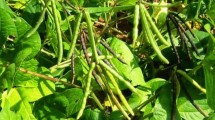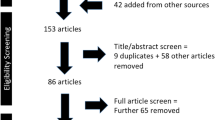Abstract
Leonurus japonicus Houtt. (Lamiaceae) is a perennial herb, which is commonly used in the treatment of cardiovascular, uterine, and gynecological diseases. In the present study, we constructed a phylogenetic tree based on the ITS + psbA-trnH + rbcL + rpoB concatenation sequence and performed partial least squares-discriminant analysis was used high-performance liquid chromatography. The results indicated that the concatenation sequence could distinguish among L. japonicus from different origins. Additionally, chemical analysis revealed intergroup differences, albeit of lower quality than the molecular phylogeny. By combining both methods, we were able to correlate the genetic and chemical differences among L. japonicus derived from different origins. Furthermore, our combined chemical and phylogenetic analyses suggested that differences in metabolites are not solely influenced by genetic differences but also environmental factors. These findings can be valuable for the artificial cultivation of L. japonicus and provide new insights for improving its quality.





Similar content being viewed by others
References
Adolfo LM, Rao X, Dixon RA (2022) Identification of Pueraria spp. through DNA barcoding and comparative transcriptomics. BMC Plant Biol. https://doi.org/10.1186/s12870-021-03383-x
Aghayeva PS, Cozzolino D, Cafasso V et al (2021) DNA barcoding of native Caucasus herbal plants: potentials and limitations in complex groups and implications for phylogeographic patterns. Biodivers Data J 17:0585–0590
Aydin ZU, Kaya Y, Donmez AA (2022) DNA barcoding evaluation of geophytes: Comparative efficiency of three barcode loci for Anemone (Ranunculaceae) and Gladiolus (Iridaceae). Plant Biosyst 156:926–937
Barzdina A, Paulausks A, Bandere D et al (2022) The potential use of herbal fingerprints by means of hplc and tlc for characterization and identification of herbal extracts and the distinction of latvian native medicinal plants. Molecules 27:2555
Borna F, Nazeri V, Ghaziani F et al (2021) Morphological and physiological response of some Iranian ecotypes of Leonurus cardiaca L. to drought stress. J Hortic Postharvest Res 4:289–302
Cheng F, Zhou YX, Wang M et al (2020) A review of pharmacological and pharmacokinetic properties of stachydrine. Pharmacol Res 155:104755
Chinese Pharmacopoeia Commission (2020) The pharmacopoeia of the People's Republic of China 2020 Edition. China Medical Science Press, pp 248–249
Feng TT, Li QW, Wang YS et al (2019) Phylogenetic analysis of Aquilaria Lam. (Thymelaeaceae) based on DNA barcoding. Holzforschung 73:517–523
He Y, Wan F, Xiong L et al (2014) Identification of two chemotypes of pogostemon cablin (Blanco) Benth. through DNA barcodes. Z Naturforsch C 69:253–258
He CM, Liang ZK, Li KP et al (2022) UPLC-MS fingerprints, phytochemicals and quality evaluation of flavonoids from Abrus precatorius leaves. J Food Compos Anal 110:104585
Jan R, Asaf S, Numan M et al (2021) Plant secondary metabolite biosynthesis and transcriptional regulation in response to biotic and abiotic stress conditions. Agronomy-Basel 11:968
Kamil M, Khan I, Rauf A et al (2023) Effects of climatic drivers on the genetic divergence of Juglans regia L. across districts Dir and Swat, Khyber Pakhtunkhwa. Pakistan Genet Resour Crop Ev 70:825–841
Korte A (2021) Getting the metabolites right. Elife 10:e70149
Kurian A, Dev SA, Sreekumar VB et al (2020) The low copy nuclear region, RPB2 as a novel DNA barcode region for species identification in the rattan genus Calamus (Arecaceae). Physiol Mol Biol Pla 26:1875–1887
Lee YS, Woo S, Kim JK et al (2022) Genetic and chemical markers for authentication of three Artemisia species: A. capillaris, A. gmelinii, and A. fukudo. PLoS ONE 17:e0264576
Li JN, Lin XJ, Tang GQ et al (2019) Pharmacognostical study of desmodium caudatum. An Acad Bras Cienc 91:e20180637
Li JJ, Fan G, He Y (2020a) Predicting the current and future distribution of three Coptis herbs in China under climate change conditions, using the MaxEnt model and chemical analysis. Sci Total Environ 698:134141
Li YY, Lin YK, Liu XH et al (2020b) Leonurine: from gynecologic medicine to pleiotropic agent. Chin J Integr Med 26:152–160
Li F, Lu Y, Li C et al (2022) trnL-trnF copy number is inversely correlated with storage time of Guang Chenpi, the aged sun-dried peels of Citrus reticulata “Chachi.” J Stored Prod Res 97:101982
Liu M, Li XW, Liao BS et al (2019) Species identification of poisonous medicinal plant using DNA barcoding. Chin J Nat Med 17:585–590
Liu ZC, Yang L, Xing RR et al (2021) Three phase dispersive liquid-liquid microextraction (DLLME) based on reverse micelles for the enrichment of Q-markers of cinnamic acids in traditional Chinese medicine. Instrum Sci Technol 49:671–684
Matsuse K, Abdelrahman M, Ariyanti NA et al (2022) Targeted metabolome profiling of Indonesian shallots and Japanese long-day/short-day bulb onions. Metabolites 12:1260
Miao LL, Zhou QM, Peng C et al (2019) Leonurus japonicus (Chinese motherwort), an excellent traditional medicine for obstetrical and gynecological diseases: a comprehensive overview. Biomed Pharmacother 117:109060
Mousavi SA, Gao Y, Penttinen P et al (2022) Using amplicon sequencing of rpoB for identification of inoculant rhizobia from peanut nodules. Lett Appl Microbiol 74:204–211
Oliveira AS, Cercato LM, Souz MTD et al (2017) The ethanol extract of Leonurus sibiricus L. induces antioxidant, antinociceptive and topical anti-inflammatory effects. J Ethnopharmacol 206:144–151
Philippe F, Dubrulle N, Marteaux B et al (2022) Combining DNA barcoding and chemical fingerprints to authenticate Lavender raw material. Int J Cosmetic Sci 44:91–102
Tan Y-J, Ding-Qiao X, Yue S-J et al (2020) Comparative analysis of the main active constituents from different parts of Leonurus japonicus Houtt. and from different regions in China by ultra-high performance liquid chromatography with triple quadrupole tandem mass spectrometry. J Pharm Biomed Anal 177:112873. https://doi.org/10.1016/j.jpba.2019.112873
Valuyskikh OE, Teteryuk LV, Pylina YI et al (2020) Phylogenetic relationships and status of taxa of Pulsatilla uralensis and P. patens s.str. (Ranunculaceae) in north-eastern European Russia. Phytokeys 162:113–130
Wang M, Shu ZJ, Wang Y et al (2017) Stachydrine hydrochloride inhibits proliferation and induces apoptosis of breast cancer cells via inhibition of Akt and ERK pathways. Am J Transl Res 9:1834–1844
Wen YQ, Gong LY, Wang L et al (2019) Comparative pharmacokinetics study of leonurine and stachydrine in normal rats and rats with cold-stagnation and blood-stasis primary dysmenorrhoea after the administration of Leonurus japonicus houtt electuary. J Sep Sci 42:1725–1732
Wen JW, Wu J, Yu HQ et al (2020) Correlation analysis between genetic and chemical differences of Nardostachys jatamansi from different habitats in Ganzi Tibetan autonomous prefecture, Sichuan Province. China Biochem Syst Ecol 92:104133
Wen J, Zhou L, Liu L, He Y (2022) Analysis of the impact of climate change on the distribution and active compound content of the plateau medicinal plant Nardostachys jatamansi (D. Don) DC. Industrial Crops Prod 187:115438. https://doi.org/10.1016/j.indcrop.2022.115438
Wong KL, But PPH, Shaw PC (2013) Evaluation of seven DNA barcodes for differentiating closely related medicinal Gentiana species and their adulterants. Chin Med-UK 8:16
Zhan XR, Chen ZH, Chen R et al (2022) Environmental and genetic factors involved in plant protection-associated secondary metabolite biosynthesis pathways. Front Plant Sci 13:877304
Zhang L, Li HX, Pan WS et al (2019) Novel hepatoprotective role of Leonurine hydrochloride against experimental non-alcoholic steatohepatitis mediated via AMPK/SREBP1 signaling pathway. Biomed Pharmacother 110:571–581
Zhao QY, Xi JZ, Xu XM et al (2022a) Volatile fingerprints and biomarkers of Chinese fragrant and non-fragrant japonica rice before and after cooking obtained by untargeted GC/MS-based metabolomics. Food Biosci 47:101764
Zhao Z-H, Yao Z-H, Lin S-J, Chu G, Kun-Qian M, Wang Y, Bi K-S, Wang T-J, Li Q, Liu R (2022b) Leonurus japonicus Houtt. (Motherwort): systematic research through chemical profiling, stability under controlled conditions and pharmacokinetic analysis on screening Q-markers for quality control. J Pharm Biomed Anal 213:114707. https://doi.org/10.1016/j.jpba.2022.114707
Zheng MD, Liu D, Zhang H et al (2021) Molecular authentication of medicinal and edible plant Gnaphalium affine (cudweed herb, “Shu-qu-cao”) based on DNA barcode marker ITS2. Acta Physiol Plant 43:119
Zhong YC, Wang HY, Wei QH et al (2019) Combining DNA barcoding and HPLC fingerprints to trace species of an important traditional chinese medicine fritillariae bulbus. Molecules 24:3269
Zivkovic U, Avramov S, Miljkovic D et al (2021) Genetic and environmental factors jointly impact leaf phenolic profiles of Iris variegata L. Plants-Basel 10:1599
Zlatić N, Stanković M (2017) Variability of secondary metabolites of the species Cichorium intybus L. from different habitats. Plants 6(3):38. https://doi.org/10.3390/plants6030038
Acknowledgements
This work was supported by the Sichuan Science and Technology Project (Grant No. 2022JDTD0029); National Natural Science Foundation of China (Grant No. U19A2010).
Funding
This work was supported by the Sichuan Science and Technology Project (Grant No. 2022JDTD0029); National Natural Science Foundation of China (Grant No. U19A2010).
Author information
Authors and Affiliations
Corresponding author
Ethics declarations
Conflict of interest
The authors have not disclosed any competing interests.
Additional information
Publisher's Note
Springer Nature remains neutral with regard to jurisdictional claims in published maps and institutional affiliations.
Rights and permissions
Springer Nature or its licensor (e.g. a society or other partner) holds exclusive rights to this article under a publishing agreement with the author(s) or other rightsholder(s); author self-archiving of the accepted manuscript version of this article is solely governed by the terms of such publishing agreement and applicable law.
About this article
Cite this article
Han, Y., Wen, J., Chen, C. et al. Relevance of genetic and active ingredient content differences in Leonurus japonicus Houtt from different origins. Genet Resour Crop Evol 71, 801–810 (2024). https://doi.org/10.1007/s10722-023-01660-2
Received:
Accepted:
Published:
Issue Date:
DOI: https://doi.org/10.1007/s10722-023-01660-2




